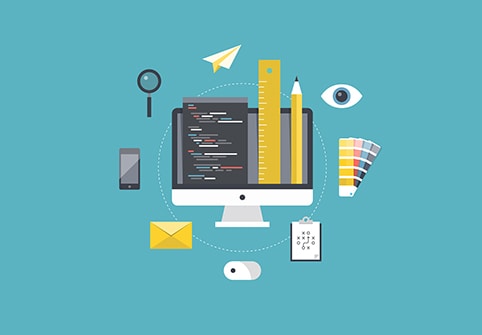|
NTRODUCTION
DIGITAL FORMATIVE ASSESSMENT AS A SOLUTION
- Formative assessment (or assessment for learning) is typically carried out on a regular basis to gauge learners’ progress through observation, quizzes, assignments and feedback.
- While the grading in summative assessment determines a student’s final skills or competence level, formative assessment focuses on the learning process and interaction, and thus serves to modify the teaching content and methods to improve learning.
- In an online learning environment, both synchronous (interaction in real-time) and asynchronous (separated in time and space) methods of formative assessment can be used.
- Given the scope and variety of digital tools available, teachers might find it challenging to select appropriate resources and tools to conduct digital formative assessments.
- Here are some examples of appropriate tools introduce the main types of such tools and their specific purposes. Existing communication tools (e.g. Zoom, Microsoft Teams, phone calls and text messaging) enable teachers and learners to interact and collaborate.
- LMS tools such as Moodle, Google Classroom and Schoology have been used as a centralized platform for delivering questions, tasks, quizzes and reviewing submissions.
- Other specialized tools have been developed to facilitate personalized learning with adaptive instructions (e.g. DreamBox Math, Woot Math) and to allow transmission of video responses (e.g. Recap and Screencastify).
- However, a crucial issue lies in the “digital gap”, illustrated by the fact that half of the world’s population does not have access to a computer and internet connection.
CHALLENGES OF THE “DIGITAL GAP”
- High-tech or low-tech, synchronous or asynchronous, all digital solutions require adequate infrastructures.
- The State of Broadband (UNESCO & ITU; 2019) as an example, its research report revealed that almost half of the world’s population still has no access to a computer and the internet.
- Every country, has its unique considerations, where all forms of digital assessment require 1) access to at least a device and sufficient bandwidth for every student, and 2) adequate digital capacities of teachers and students to employ the tools.
- Progress has been made in opening up new avenues for digital formative assessments in low-connectivity and low-resource contexts. For example, phone-based platforms with strong offline functionality (e.g. Cell-Ed and Ustad Mobile) can potentially be used in combination with easy-to-access content targeted for underserved communities (e.g. Rumie).
- Text messaging platforms have been adapted to help deliver and track learning (e.g. WhatsApp courses), which remains a solution less explored for traditional subjects.
- In the short term, immediate relief has pushed schools to adopt lower cost and lower tech solutions, such as sending photos of assignments and collaborating with parents to administer tests.
- In the longer term, as schools refine their distant learning models and draw plans for reopening, system-wide changes will be needed to strengthen digital formative assessment capacities in 1) capturing diverse forms of learning, and 2) producing data to diagnose and address learning gaps.
OPPORTUNITIES FOR MOVING FORWARD
1. Capturing diverse forms of learning
- While formal learning is being conducted from a distance, students are more likely to engage in informal learning in their homes.
- Learning can penetrate through modalities such as online chat forums, observational learning and virtual museums. These forms of learning contribute to development of collaboration, inter-cultural competence and metacognition skills – which collectively constitute 21st century skills (i.e. the skills needed to live and work in today’s world, with varied interpretations and perspectives).
- Digital summative assessments may not capture all of 21st century skills, as they were designed to prioritize objectivity, standardization and ‘content-correctness’.
- Digital formative assessment can take a blended approach with self-assessment, teachers’ judgements and tracking of ongoing performance to measure learning. For example, in Finland, continuous assessment of apprenticeshipshas been used as an indicator of students’ workplace performances and a basis for graduation.
- Digital formative assessment promotes skills development and forms the foundations of lifelong learning – the capacity and resilience to learn throughout life stages and in different circumstances, such as during school closure.
- It is important to note that not all subjects and competencies can be assessed digitally or at a distance such as lab experiments.
2. Diagnosing and addressing learning gaps
- Digitalization of formative assessment enables the collection of a larger volume of data that is more representative of learners’ evolving understanding and developmental capacities, compared to data gathered at static timepoints (e.g. observation, pen-and-paper quizzes and homework).
- When used appropriately, the analytics can inform teachers of the quality of their instructional content, reveal the motivation levels ofyoung learners, and identify learning gaps for catch-up classes and additional support after schools reopen.
- The specific approach to integrating digital formative assessment is highly context-dependent and varies largely between countries and education systems, investment from school management and governments is required to support students and upskill teachers.
- For example, schools can ensure that assessments are valid, timely, constructive and specific to the learning needs of students, efforts should also be made to embed digital skills across the curriculum so that students get adequately familiarized with not only online or virtual learning modalities but also the accompanying assessment.
- Professional development for teachers should focus on their resourcefulness and skills in designing quality assessments, capacity to analyse the data and technical knowledge to act on data insights.
CONCLUDING REMARKS
- Above all, digital formative assessment should aim for both immediate evaluation of learners’ progress and the potential to complement summative assessment in the long term, to continually measure learning even when faced with future crises.
- The broadened use of digital formative assessment can serve to promote teaching and learning of 21st century skills, if appropriate measures are taken to ensure equity
Reference:
|











